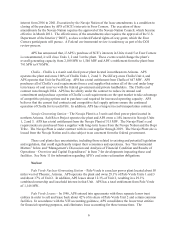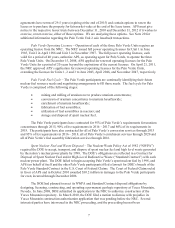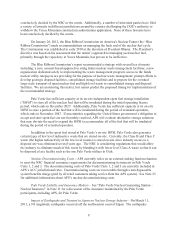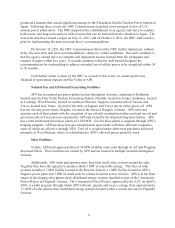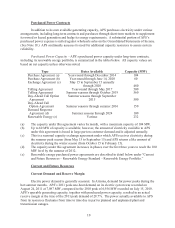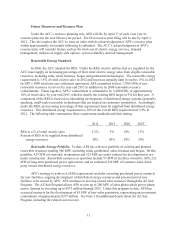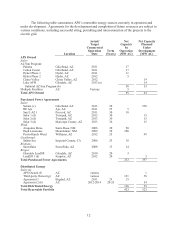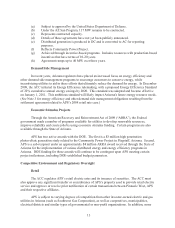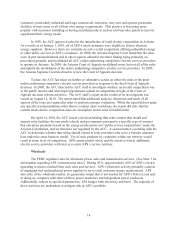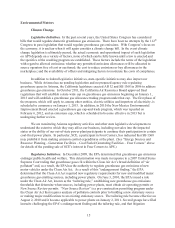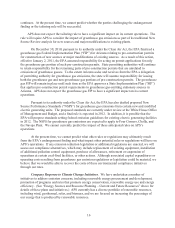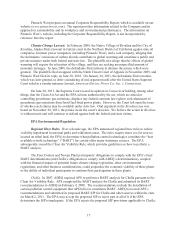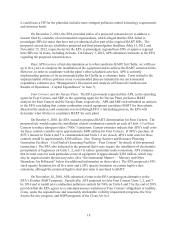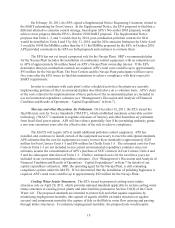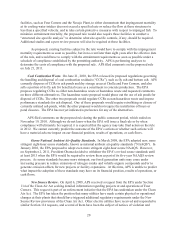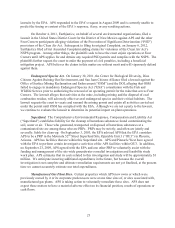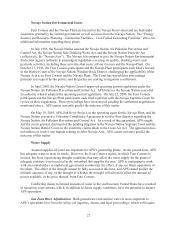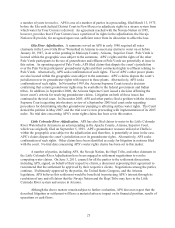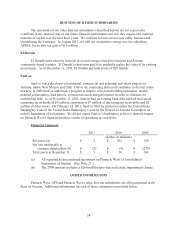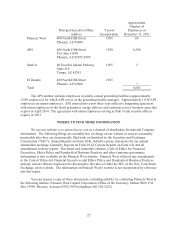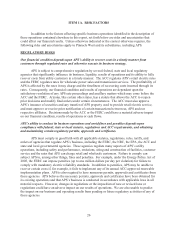APS 2011 Annual Report Download - page 40
Download and view the complete annual report
Please find page 40 of the 2011 APS annual report below. You can navigate through the pages in the report by either clicking on the pages listed below, or by using the keyword search tool below to find specific information within the annual report.16
continues. At the present time, we cannot predict whether the parties challenging the endangerment
finding or the tailoring rule will be successful.
APS does not expect the tailoring rule to have a significant impact on its current operations. The
rule will require APS to consider the impact of greenhouse gas emissions as part of its traditional New
Source Review analysis for new sources and major modifications to existing plants.
On December 30, 2010, pursuant to its authority under the Clean Air Act, the EPA finalized a
greenhouse gas Federal Implementation Plan (“FIP”) for Arizona relating to pre-construction permits
for construction of new sources or major modifications of existing sources. As a result of this action,
effective January 2, 2011, the EPA assumed responsibility for acting on permit applications for only
the greenhouse gas portion of such pre-construction permits. State permitting authorities will continue
to retain responsibility for the remaining parts of pre-construction permits that are unrelated to
emissions of greenhouse gasses. To the extent Arizona seeks and receives from the EPA a delegation
of permitting authority for greenhouse gas emissions, the state will assume responsibility for issuing
both the greenhouse gas and non-greenhouse gas portions of pre-construction permits. The greenhouse
gas FIP will remain in place until such time as the EPA approves a State Implementation Plan (“SIP”)
that applies pre-construction permit requirements to greenhouse gas-emitting stationary sources in
Arizona. APS does not expect the greenhouse gas FIP to have a significant impact on its current
operations.
Pursuant to its authority under the Clean Air Act, the EPA has also drafted proposed New
Source Performance Standards (“NSPS”) for greenhouse gas emissions from certain new and modified
electric generating units. The proposed standards are currently under review at the White House Office
of Management and Budget, and a final rule is expected in 2012. In addition, it is possible that the
EPA will propose standards setting federal emission guidelines for existing electric generating facilities
in 2012. The NSPS for greenhouse gas emissions are expected to apply to Four Corners, Cholla, and
the Navajo Plant. We cannot currently predict the impact of these anticipated rules on APS’s
operations.
At the present time, we cannot predict what other rules or regulations may ultimately result
from the EPA’s endangerment finding and what impact other potential rules or regulations will have on
APS’s operations. If any emission reduction legislation or additional regulations are enacted, we will
assess our compliance alternatives, which may include replacement of existing equipment, installation
of additional pollution control equipment, purchase of allowances, retirement or suspension of
operations at certain coal-fired facilities, or other actions. Although associated capital expenditures or
operating costs resulting from greenhouse gas emission regulations or legislation could be material, we
believe that we would be able to recover the costs of these environmental compliance initiatives
through our rates.
Company Response to Climate Change Initiatives. We have undertaken a number of
initiatives to address emission concerns, including renewable energy procurement and development,
promotion of programs and rates that promote energy conservation, renewable energy use and energy
efficiency. (See “Energy Sources and Resource Planning – Current and Future Resources” above for
details of these plans and initiatives.) APS currently has a diverse portfolio of renewable resources,
including wind, geothermal, solar, and biomass, and we are focused on increasing the percentage of
our energy that is produced by renewable resources.


